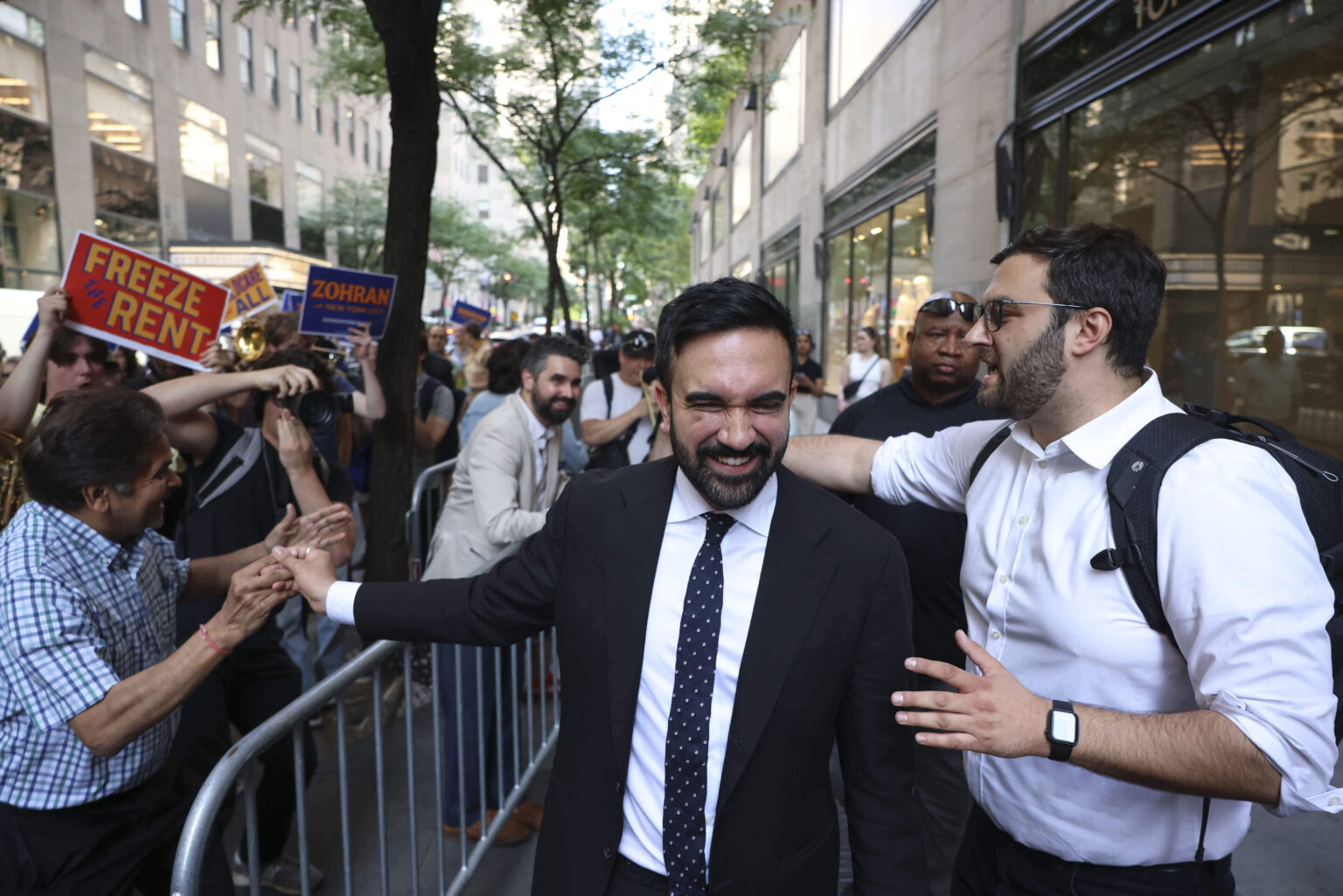Revolutionizing Political Campaigns: The Digital Rise of Zohran Mamdani in New York City
Innovative Campaign Tactics and Viral Engagement
Zohran Mamdani, a 33-year-old democratic socialist, captured public attention through unconventional methods during his bid for New York City’s mayoralty. While participating in a marathon, he articulated his platform to freeze rent increases, even taking a daring plunge into icy waters dressed in formal attire to symbolize his commitment. His creative stunts extended to social media, where he shared a Valentine’s Day parody of “Can You Feel the Love Tonight,” accompanied by red heart-shaped balloons traversing Manhattan streets. Mamdani also coined the term “Halalflation” to describe surging food prices, all from within a food cart, and used cups of lassi to explain ranked-choice voting in Urdu, blending humor with education.
Social Media as a Campaign Powerhouse
By mid-2023, Mamdani’s online presence had skyrocketed, with a viral post on X (formerly Twitter) amassing over 17 million views, claiming, “Just tweet ‘Zohran Mamdani’ and instantly receive 1,000 likes.” His digital strategy diverged sharply from traditional political advertising, emphasizing direct engagement and authentic communication. This approach resonated particularly with younger voters and progressive Democrats disillusioned with conventional politics, setting him apart from rivals like former Governor Andrew Cuomo, whose campaign relied heavily on television ads and mailers.
Connecting with the Youth and the Digital Audience
Throughout his campaign, Mamdani leveraged social media to foster a sense of immediacy and relatability. On Election Day, he interacted with influencers based in New York City and appeared in a video shared by Pop Crave, a platform popular among Gen Z audiences. His victory celebration featured prominent young figures, including Ella Emhoff, stepdaughter of Vice President Kamala Harris, and activist David Hogg. This digital-first approach, characterized by trending videos and collaborations with diverse content creators, helped him secure an unexpected victory over political heavyweights, demonstrating the power of online authenticity and grassroots storytelling.
Data-Driven Digital Strategy and Audience Engagement
According to analytics firm Sprout Social, Mamdani’s Instagram engagement rate during June was 14 times higher than Cuomo’s, and online conversations about him outnumbered mentions of Cuomo by more than 30-to-1. His campaign team, including co-founders Debbie Saslaw and Anthony DiMieri, emphasized the importance of storytelling rooted in everyday experiences. Their initial pitch involved showcasing the lives of ordinary New Yorkers-whether diving into icy waters or racing city buses-to build a relatable narrative that could “win the internet.”
From Local Campaigns to National Influence
Prior to his mayoral run, Mamdani’s approach was shaped during his 2022 campaign for the New York State Assembly, where his direct-to-camera videos and walk-and-talk style gained traction. His team’s strategy focused on building a broad platform to highlight issues faced by regular residents, such as transportation and housing. For instance, Mamdani’s walk across Manhattan last weekend drew supporters and media attention, contrasting sharply with earlier efforts that involved asking commuters for permission to film on buses-a testament to his growing popularity.
Authentic Storytelling and Media Innovation
Campaign content often drew inspiration from documentary filmmaking, emphasizing an intimate, handheld aesthetic that prioritized Mamdani’s policy proposals. Videos in multiple languages, including Urdu and Spanish, aimed to reach diverse communities. Campaign director Donald Borenstein explained that content was crafted to be engaging yet respectful, avoiding jokes at the expense of serious issues. Mamdani’s background, including his mother’s acclaimed work as a filmmaker and his own past in music, contributed to his authentic and relatable media persona.
Engaging with Opponents and Broader Audiences
Mamdani’s outreach extended beyond traditional supporters, collaborating with influencers and appearing on platforms outside the typical political sphere. His participation in podcasts hosted by former NYPD officers, despite disagreements on policing policies, exemplified his willingness to engage in honest dialogue. Additionally, he appeared on unconventional shows like “Gaydar,” a light-hearted quiz series, where his candid responses garnered millions of views and even endorsements from hosts, signaling a new era of political communication that embraces vulnerability and humor.
Redefining Democratic Strategies for the Digital Age
Experts acknowledge that Mamdani’s success hinges on his personal charisma and the authenticity of his online presence, which may be challenging for other candidates to replicate. Nonetheless, his campaign’s integration of digital content with grassroots efforts has set a new standard. Democratic strategist David Axelrod praised Mamdani’s approach, noting that his ability to connect on issues like affordability through genuine storytelling helped him overcome traditional political barriers.
Lessons for Future Campaigns
While the right has historically excelled in digital outreach, Democrats are increasingly recognizing the importance of innovative online strategies. Brenna Parker, a digital strategist, emphasized that taking risks and fostering creative content can yield significant results, as demonstrated by Mamdani’s campaign. Political analyst Mitchell L. Moss summarized the contrast succinctly: “Mamdani operates in the 21st century, while Cuomo remains rooted in outdated methods.”
Conclusion: A New Paradigm in Political Engagement
Mamdani’s campaign exemplifies how authenticity, creativity, and direct communication can reshape electoral politics in the digital era. As the midterm elections approach, political parties are watching closely, eager to adopt similar strategies that prioritize genuine connection over traditional advertising. His success underscores a fundamental shift: in today’s landscape, engaging voters requires more than just policy proposals-it demands storytelling that resonates on a personal level, harnessing the power of social media to turn everyday citizens into political influencers.

